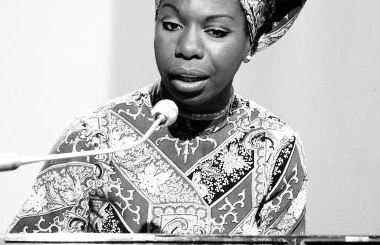Baltimore by Nina Simone Lyrics Meaning – Urban Despair and the Quest for Hope
Lyrics
On a marble stair
Tryin’ to find the ocean
Lookin’ everywhere
Hard times in the city
In a hard town by the sea
Ain’t nowhere to run to
There ain’t nothin’ here for free
Hooker on the corner
Waiting for a train
Drunk lying on the sidewalk
Sleeping in the rain
And the people hide their faces
And they hide their eyes
‘Cause the city’s dyin’
And they don’t know why
Oh, Baltimore
Ain’t it hard just to live?
Oh, Baltimore
Ain’t it hard just to live?
Just to live
Get my sister Sandy
And my little brother Ray
Buy a big old wagon
To haul us all away
Live out in the country
Where the mountain’s high
Never gonna come back here
‘Til the day I die
Oh, Baltimore
Ain’t it hard just to live?
Oh, Baltimore
Ain’t it hard just to live?
Just to live
With an evocative melody and somber tone, Nina Simone’s ‘Baltimore’ transcends a mere song—it’s a cry from the heart of urban decay, a narrative wrapped in jazz and soul. The lyrics, penned by Randy Newman and immortalized by Simone’s haunting delivery, tell a story that is as relevant today as it was when the song was first released in 1978.
Nina Simone, a figure whose music often reflects social consciousness, carries the burden of a city’s struggles and presents it to the listener, offering a window into the everyday trials faced by its residents. ‘Baltimore’ is not just a geographical location; it’s a symbol of larger issues that plague modern cities: economic disparity, hopelessness, and the yearning for escape.
A Tale of Urban Desolation
The opening lines introduce a seagull, futilely searching for the ocean in a concrete wasteland, a powerful metaphor for the natural instinct to find one’s place, thwarted by an unforgiving urban landscape. Simone sings of hard times, a city weighed down by poverty and deprivation, where dreams are as scarce as the sea the seagull seeks.
The stark images of a city’s decay are rendered in Simone’s soulful timbre, each verse depicting the blight and struggle of city life. Characters like the hooker and the drunk portray individuals reduced to their circumstances, the human faces of a systemic problem, each one trying to survive in a city that offers little comfort.
The Chorus: A Haunting Refrain
The simplicity of the chorus belies the depth of its query: ‘Oh, Baltimore / Ain’t it hard just to live?’ The repetition is not only a musical hook but also an emphasis on the existential dilemma faced by the denizens of Baltimore and, by extension, any city that has seen better days.
Simone’s repetition is a sonic mirror to the cyclical nature of urban hardship. It resonates as a rhetorical question, the answer being an evident ‘yes’ that is felt in the weary hearts of those who understand the daily grit required to forge a life amid scarcity.
Escape to the Country: The Dream of Departure
The narrative shifts as Simone’s character yearns for escape, a longing to abandon the city for the pastoral solace of the country. Through the longing for a rural refuge, Simone voices the universal dream to break free from the manacles of hardship and to seek solace in a place untouched by urban blight.
The fantasy of withdrawal is a poignant moment in the song, underlining the notion that for many, the only solution to an intolerable reality is to flee from it. Yet, the commitment ‘Never gonna come back here / ‘Til the day I die’ also acknowledges a somber resignation that puts forth leaving as a one-way journey, away from pain and toward an idealized peace.
Unmasking the City’s Soul
‘And the people hide their faces / And they hide their eyes’ resonates as one of the most powerful lines in the song. It illustrates not only the shame and sadness that come with living in a decaying city but also the willful ignorance of those who choose to look away from suffering.
Simone reveals an inherent human conflict: the desire to confront uncomfortable truths versus the inclination to avoid them. This line shatters any pretense of indifference, forcing acknowledgement of the shared plight—with Simone’s voice compelling listeners to confront the harsh realities many wish to ignore.
The Hidden Meaning Within the Seagull’s Struggle
While ‘Baltimore’ is ostensibly a tale of hardship, within it lies a deeper narrative of resilience and resistance. The beat-up little seagull’s tenacious quest suggests a silent strength that undercuts the apparent narrative of despondency.
Simone’s portrayal of the seagull, and by extension the city’s residents, is a metaphorical manifesto of hope. Despite being trapped within an urban maze, the seagull’s undying intent to find the ocean reflects the unwavering human spirit that refuses to be subdued by circumstance, no matter how insurmountable it may seem.








